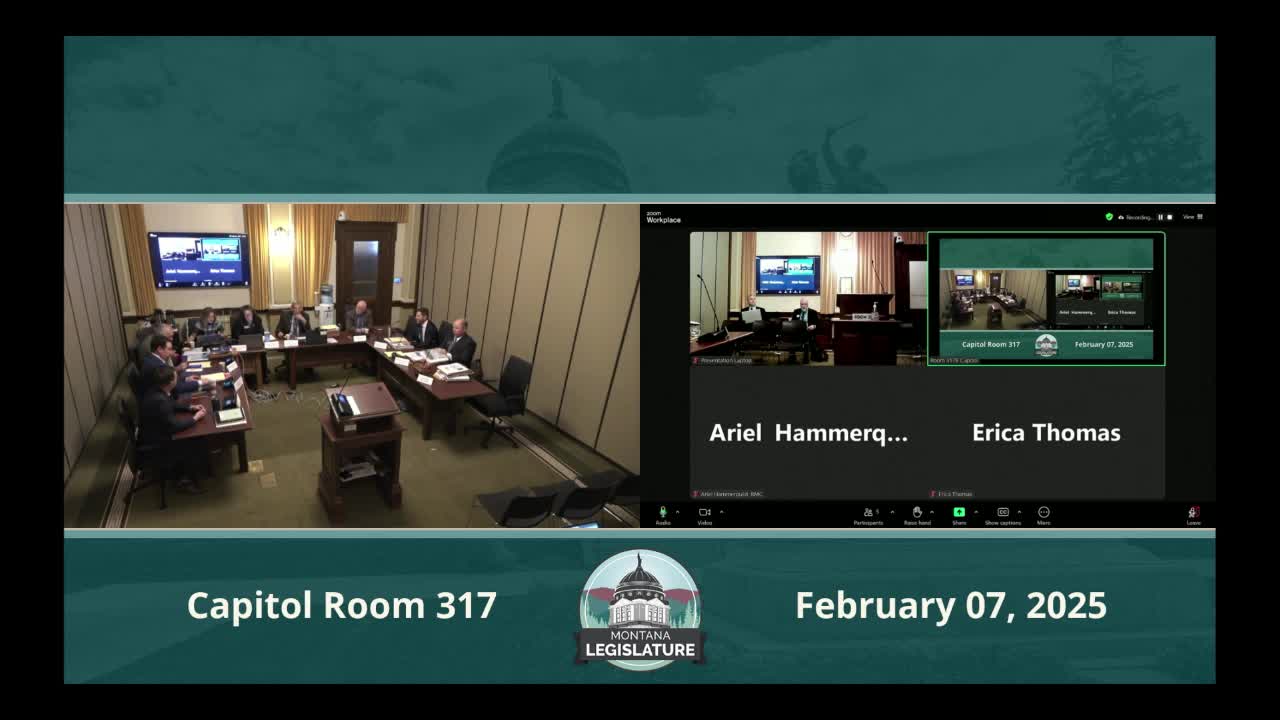Subcommittee reviews $150 million request to add roughly 500 beds at Deer Lodge prison
February 07, 2025 | 2025 Legislature MT, Montana
This article was created by AI summarizing key points discussed. AI makes mistakes, so for full details and context, please refer to the video of the full meeting. Please report any errors so we can fix them. Report an error »

A House appropriations subcommittee on Wednesday reviewed a $150 million capital request in House Bill 5 to build two new housing pods and supporting infrastructure at the Montana State Prison in Deer Lodge.
The request—which the architecture and engineering division said is itemized in a select committee report—covers three main components: two housing pods to reach the roughly 500‑bed target, connecting corridors and building infrastructure, and a support building. The division also identified roughly $21 million in preliminary costs to expand sewage treatment capacity and to bring a primary high‑voltage line from Northwestern Energy to the site.
Why it matters: Subcommittee members described the project as addressing severe overcrowding in Montana’s prison system and reducing reliance on out‑of‑state placements. Lawmakers asked for clearer headcounts, long‑range siting alternatives and follow‑up proposals that address the state’s full prison population, including women.
At the meeting, Representative Mike Tuss (Representative) asked for a “whiteboard version” of the bed need and observed, “Will, if my math is correct, construct 512 new beds, at at Deer Lodge.” Russ Catherman, the architecture and engineering division witness, told the committee the $150 million estimate “breaks down to 3 main components on the 150,000,000. The 2 new housing pods that would get you to the 500 beds, all the connecting it, building infrastructure corridors, and the support building.” Catherman said the $21 million figure for utilities and lagoon works is “preliminary” and was developed with the department’s engineers and Northwestern Energy.
Committee members pressed for clarity on who the new beds would serve and how the project fits into longer‑term capacity planning. Catherman and other witnesses said the Deer Lodge site was chosen in part to avoid protracted siting disputes elsewhere and because the campus has room for additional pods in the future. Senator Esp added that the department is renegotiating a lease in Shelby and may secure beds there as part of the mix.
Lawmakers also raised the separate, but related, need at the women’s prison. Catherman and others said the women’s facility will require additional legislation and funding, and at the time of the hearing about 80 women were housed in county jails; witnesses estimated about 230 additional beds would be needed to address that shortfall.
What’s next: Committee members asked staff to provide more granular cost breakdowns, the select committee’s supporting numbers and follow‑up materials that clarify the project schedule, sewage and power requirements, and alternatives for future expansion.
The request—which the architecture and engineering division said is itemized in a select committee report—covers three main components: two housing pods to reach the roughly 500‑bed target, connecting corridors and building infrastructure, and a support building. The division also identified roughly $21 million in preliminary costs to expand sewage treatment capacity and to bring a primary high‑voltage line from Northwestern Energy to the site.
Why it matters: Subcommittee members described the project as addressing severe overcrowding in Montana’s prison system and reducing reliance on out‑of‑state placements. Lawmakers asked for clearer headcounts, long‑range siting alternatives and follow‑up proposals that address the state’s full prison population, including women.
At the meeting, Representative Mike Tuss (Representative) asked for a “whiteboard version” of the bed need and observed, “Will, if my math is correct, construct 512 new beds, at at Deer Lodge.” Russ Catherman, the architecture and engineering division witness, told the committee the $150 million estimate “breaks down to 3 main components on the 150,000,000. The 2 new housing pods that would get you to the 500 beds, all the connecting it, building infrastructure corridors, and the support building.” Catherman said the $21 million figure for utilities and lagoon works is “preliminary” and was developed with the department’s engineers and Northwestern Energy.
Committee members pressed for clarity on who the new beds would serve and how the project fits into longer‑term capacity planning. Catherman and other witnesses said the Deer Lodge site was chosen in part to avoid protracted siting disputes elsewhere and because the campus has room for additional pods in the future. Senator Esp added that the department is renegotiating a lease in Shelby and may secure beds there as part of the mix.
Lawmakers also raised the separate, but related, need at the women’s prison. Catherman and others said the women’s facility will require additional legislation and funding, and at the time of the hearing about 80 women were housed in county jails; witnesses estimated about 230 additional beds would be needed to address that shortfall.
What’s next: Committee members asked staff to provide more granular cost breakdowns, the select committee’s supporting numbers and follow‑up materials that clarify the project schedule, sewage and power requirements, and alternatives for future expansion.
View full meeting
This article is based on a recent meeting—watch the full video and explore the complete transcript for deeper insights into the discussion.
View full meeting
